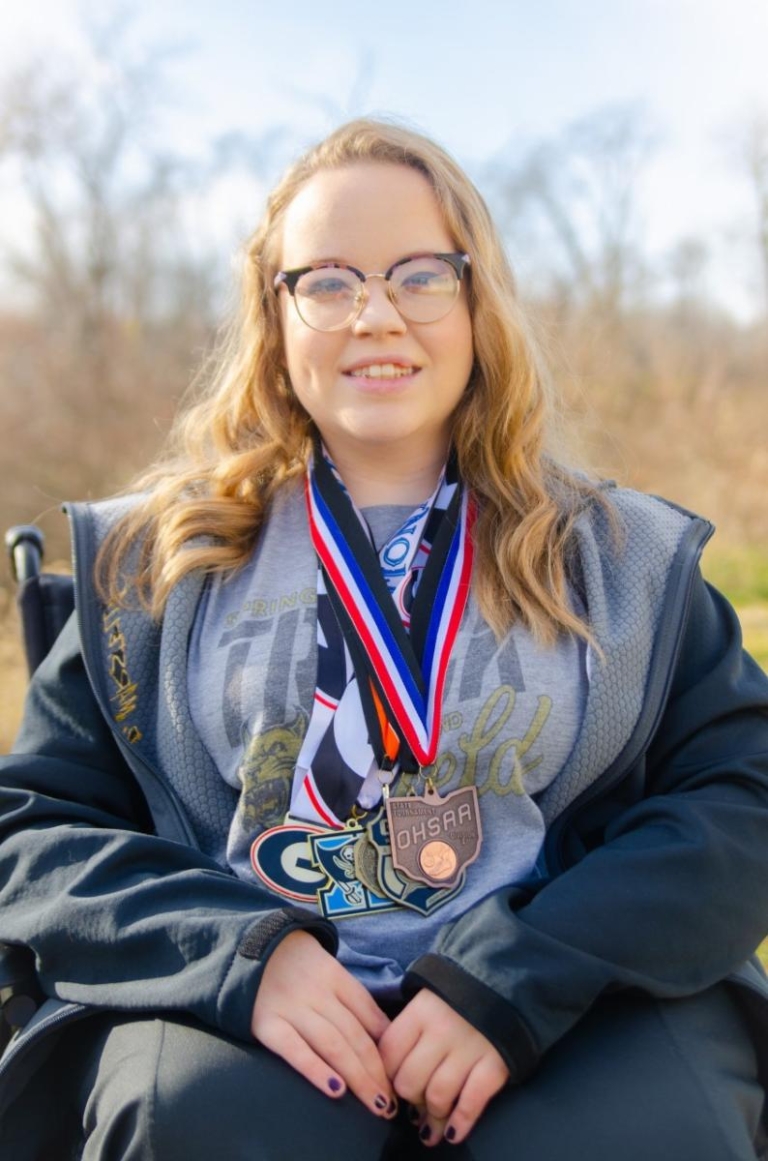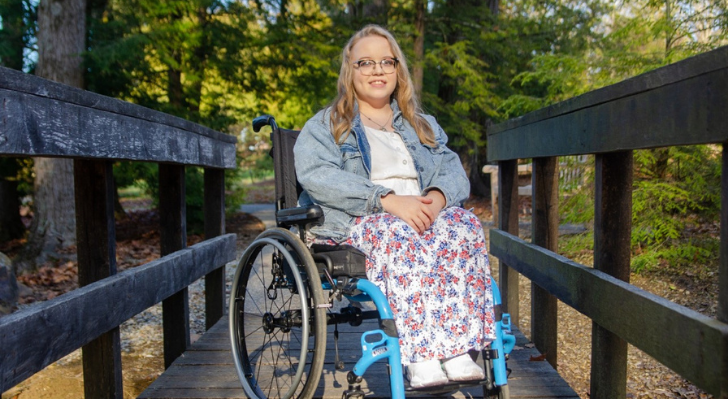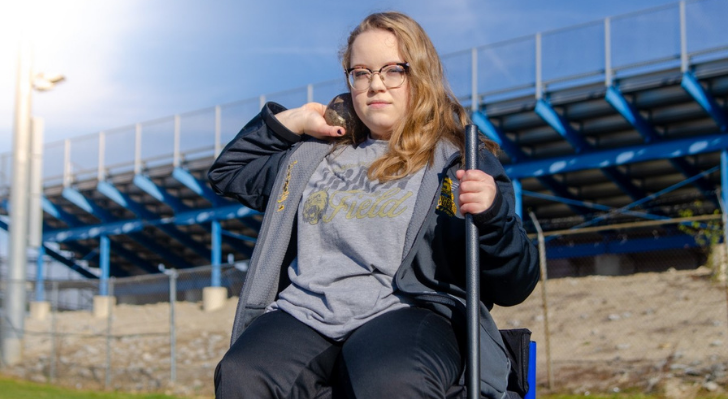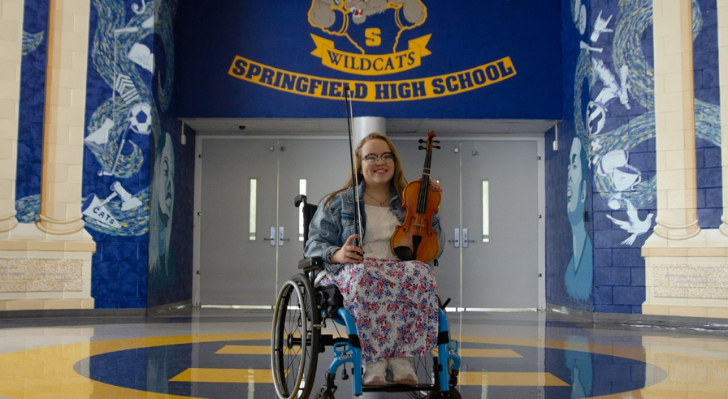When Jadyn Marstella, 18, was born, her parents, Hilary and Justin, noticed a skin tag on her back. They brought it to the attention of Jadyn's primary care provider who immediately ordered an MRI (Magnetic Resonance Imaging). Skin tags, a patch of thick hair, a deep dimple, or a red birthmark over the lower spine are common symptoms of various forms of spina bifida and her primary care provider wanted to rule out any serious concerns.
Unfortunately, the MRI showed a fatty growth attached to Jadyn's spinal cord and confirmed her diagnosis of lipomeningocele.
Lipomeningocele is a form of spina bifida in which an abnormal growth of fat attaches to the spinal cord and its membranes. Normally, the spinal cord moves somewhat freely within the spinal canal, but in patients with lipomeningocele, the cord's movement is restricted. When this happens, the condition is called a tethered spinal cord.
At the time, Jadyn's family lived in northeast Ohio where they had access to another children's hospital closer to home. And at two months of age, her providers operated to release the tethered cord.
a change of scenery
When Jadyn was four, her mom, Hilary got a new job which resulted in a move to Springfield and a change in insurance coverage. These changes brought the family closer to Dayton and when Jadyn turned ten, they decided to give Dayton Children's Hospital a try. After all, it never hurts to get a second opinion.
Jadyn was first seen in neurosurgery at Dayton Children's. After reviewing Jadyn's medical history, her surgeon noticed she hadn't had an MRI since she was five-months-old. He immediately ordered the imaging and noticed her spinal cord was tethered again.
"Jadyn's neurosurgeon called us personally on a Sunday to give us the results of her MRI," said Hilary. "That personal touch was something we would have never gotten at a larger hospital."
This time around, Jadyn had to have two surgeries to release the tethered cord, leaving her in the hospital for six weeks. While the surgeries were successful, Jadyn developed muscular atrophy, making her dependent on a wheelchair or crutches.
Since her surgeries, Jadyn continues to follow up in the myelomeningocele clinic once a year, where she sees specialists from neurology, urology, orthopedics, occupational therapy and physical therapy. And this year, she will have her last MRI. Once a patient has fully developed and they are done growing, the cord can't be tethered again.
breaking down barriers
Jadyn is the epitome of inspiration and determination. Although limited in her mobility due to lipomeningocele, Jadyn has a drive within her to push beyond her

limitations. During her junior year of high school, Jadyn started competing as a para-athlete for Springfield in the seated shot put. She never intended for it to go beyond spending time with her family on the track, but in true Jadyn fashion, she pushed herself and excelled. Just last year, Jadyn placed third in the Ohio High School Athletic Association (OHSAA) Track and Field championships, making her Clark County's first para-athlete to qualify for the OHSAA's seated division.
"She's a trailblazer breaking down barriers," said Justin, who also serves as a coach on the track team. "This year we have three children with disabilities on the track team because they were inspired by Jadyn."
Aside from being a champion in the seated shot put, Jadyn is also a skilled musician and avid reader. This fall she plans to put her passion to use when she attends her first year of college at Trevecca Nazarene University, where she will major in English literature and minor in music. Following college, Jadyn hopes to pursue a career in publishing.
"I hope to help drive more awareness to children with spina bifida," said Jadyn. "This diagnosis has happened, but we can still make life amazing. Just hold on and keep going!"




